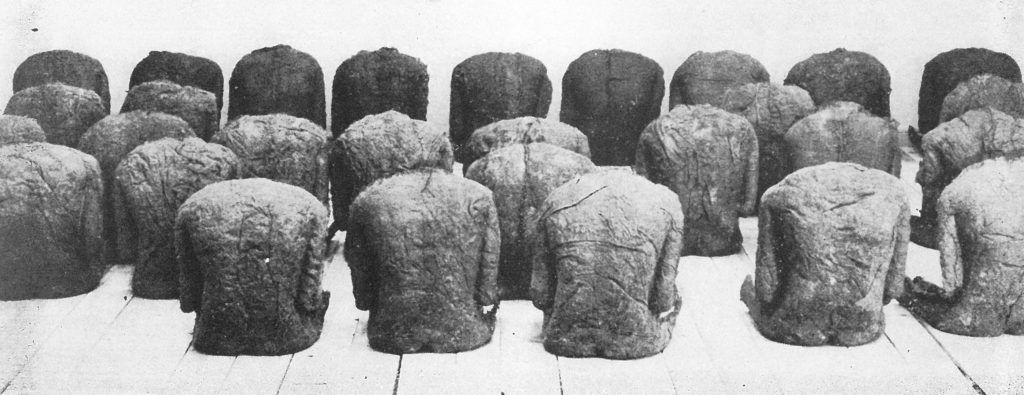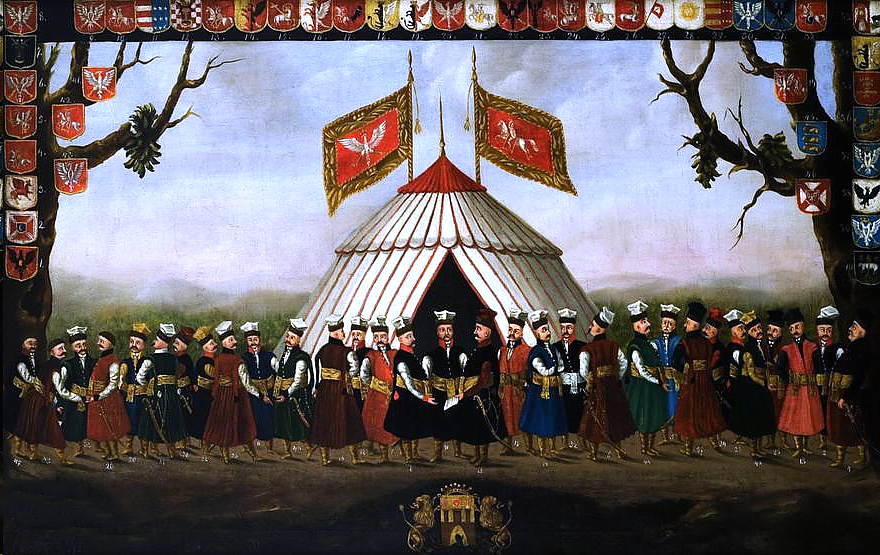If you are going to the museum, you should see this
ONE OBJECT

In London’s premier museum of contemporary art, the Tate Modern, there is a room that feels a bit crowded.
In the long corridor of the museum, you can see what looks like 15 seated human figures, all sitting with heads bent, arms drawn in, and cowering from the circumstances they face.
This installation, known as Backs, was created by Polish artist, Magdalena Abakanowicz.
Each figure is hand-crafted from guazy linen and resin, and Abakanowicz has created these back groups for installations all over the world.
We celebrate the sculptors of Ancient Greece and Rome as the masters of recreating the human form.
When looking at Greco-Roman sculpture, we marvel at the lifelike quality of the polished stone—how did the Greeks sculpt in such a way that looks so real?
But what kind of “real” do we see? Youthful, supple skin that shines with a perfected finish. What if we want to explore what a person looks like who does not bask in times of peace and plenty?
With linen sackcloths, Sculptor Magdalena Abakanowicz rethinks how to sculpt the human form. The use of linen creates a sense of flesh as well, but this is a different flesh. It’s worn, battered, weathered flesh. It’s flesh that has been harmed, that has been stretched and bears scars.
The material is irritating and unsettling. These gauzy, huge pieces of cloth trick us into thinking that they are people.
It’s kind of like when you wake up in the night, thinking that you are looking at a serial killer by the side of your bed, only to discover that the killer is actually the bathrobe you left on the elliptical machine.
Approaching the figure, we may think, “This is flesh of a human back, hunched over. I see the group, I recognize this as a communal activity—perhaps cowering refugees or a tribal prayer.”
And then…poof! Our expectations are upset.
The figures are mere shells, with backs only: there are no arms or head.
There is no actual figure. It is rather a figment: a memory, a thought in our minds-eye that transforms when we get closer. Do we carry vistas in our heads? Scenes of memories that can easily fade when our minds take a turn?
And yet, our mind might often revisit that scene.
Royal Birth
Abakanowicz was born with royal ancestry on both sides. Her father, a Russian Tartar and direct descendant of Genghis Khan, her mother’s bloodline traces back through Polish nobility.
Magdalena was born into great privilege and wealth until the Bolshevik Revolution forced her family to flee by night to the Polish countryside.
Living under the threat of Nazi occupation, Magdalena witnessed human suffering on a massive scale.
Abakanowicz remembers,

“…we, as family, lost our identity. We were deprived of our social position and…thrown out of society. We were punished for being rich. So I had to hide my background. I had to lie. I had to invent.”
Despite a world turned upside down, Abakanowicz trained as an artist in Poland. Magdalena was expected to follow the state-sponsored instruction of social realism, but she felt the responsibility to create art that spoke to the experiences that her people had weathered through the storms of war and communist rule.
Abakanowicz’s reputation grew through her unconventional sculptures. She admits, in the beginning, using the course sackcloths began out of necessity; it was a material she could find easily.
But with this type of material, she could create a softness that is unsettling and so unlike the traditional sculpted marble and bronze.
Upon her death in 2017, Magdalena Abakanowicz was recognized as a pivotal figure among contemporary artists.
Along with the Backs installations, her work delves into themes of war, human group dynamics, and regeneration.
